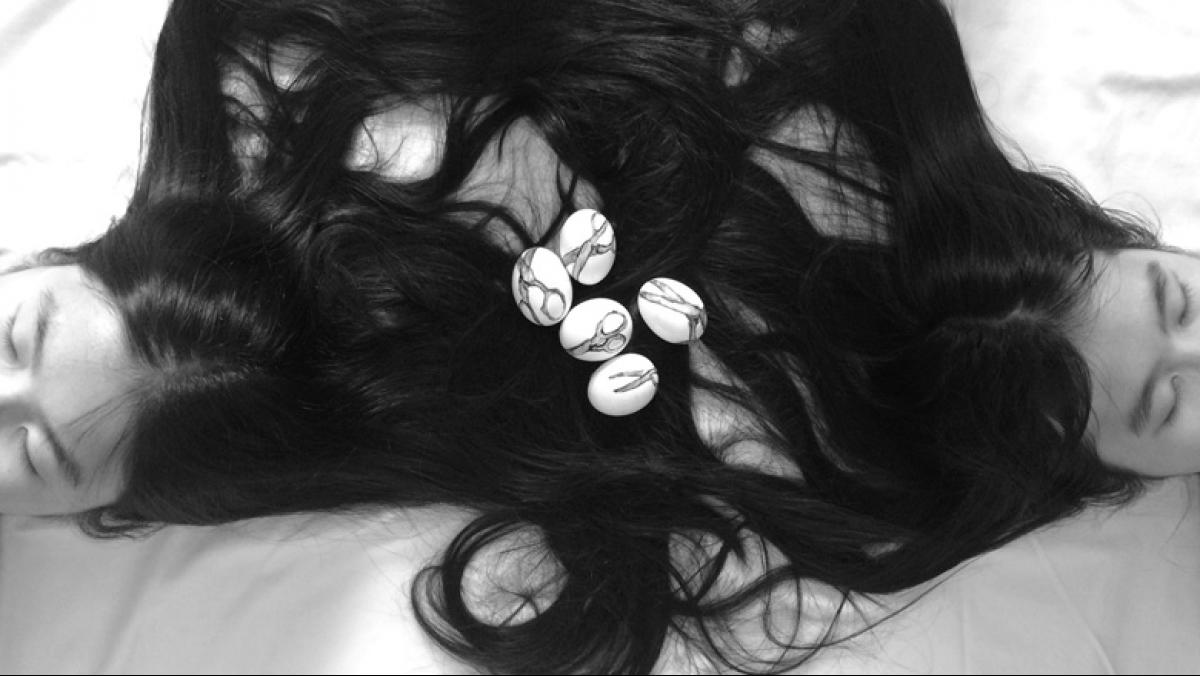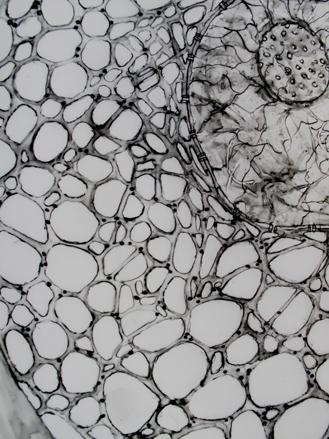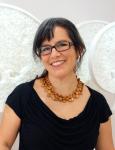Location
Leslie Iwai’s installation for the James Watrous Gallery, Daughter Cells: Inheritance, Separation & Survival, is an investigation of family relationships at both the cellular and emotional level: what we inherit, how we separate, and what we choose to retain and pass on. Daughter Cells was inspired by a groundbreaking discovery in human cellular division at the Carbone Cancer Center at the University of Wisconsin-Madison. Through a friend, Iwai met Dr. Mark Burkard, whose research into “cytofission” suggests that damaged cells have an innate, inherited ability to recover. Burkard's discovery reveals how resilient human cells find a substitute way to recover genetic integrity as a kind of fail-safe when errors in cellular division occur.
Iwai began shaping the concept of cytofission into a body of work that includes sculpture, text, drawing, and photography. Daughter Cells represents Iwai’s attempt to connect the intimate human narratives of separation, journey, and inheritance to this cellular survival story. Throughout the installation, Iwai extends the themes of survival, resilience, inheritance and escape from the cellular level to more familiar human terms. Using blown eggshells, crocheted string, resin, and architectural elements, for example, she has created a sculptural rendering of a cell's cytoskeleton, stretched and morphed during the process of cytofission. Stark images of two sisters, alike but not identical, serve as reminders that even in division, we maintain our attachments.
Iwai's exhibition is complemented by a time-lapse video of cellular division and a series of photomicrographs, courtesy of Dr. Burkard’s lab at the University of Wisconsin-Madison's Carbone Cancer Center.





